2025 Volvo EX30 Ice Drive: Sliding through Sweden in Volvo's charming, new EV

GULLTRÄSK, Sweden — The irony of testing the new 2025 Volvo EX30 on a frozen lake mere miles south of the Arctic Circle is about as strong as the nonstop snow whipping my face upon exiting the sumptuously warm haven that is this little crossover’s colorful interior. Chances are, very few EX30 buyers in the United States will find themselves in such extreme conditions that studded winter tires become a non-negotiable item. But hey, when the opportunity arises to put what is arguably one of the most exciting new EVs introduced in the past year through the sort of ice driving Volvo does while testing on the company’s Swedish home turf, the only reasonable answer is, “Yes, please.”
Why’s the EX30 so exciting? There are 36,245 reasons why. Most new EVs are inarguably expensive propositions, but with a starting (and startling) price of just $36,245, the EX30 aims to buck that trend. Not only is it inexpensive in comparison to the vast majority of EVs on sale today, but on paper and in person, it looks like a car one would expect to cost significantly more. The EX30’s performance figures are a huge contributor to this disconnect. Its single-motor, rear-drive model produces 268 horsepower and 253 pound-feet of torque (0-60 mph in 5.1 seconds), while the dual-motor AWD model amps that up to a rocking 422 horsepower and 400 pound-feet of torque (0-60 in 3.4 seconds). The performance party trick here is that the EX30 is lightweight for an EV, coming in at just 4,140 pounds with AWD or 3,858 pounds with RWD – that comes in handy when you’re on ice.
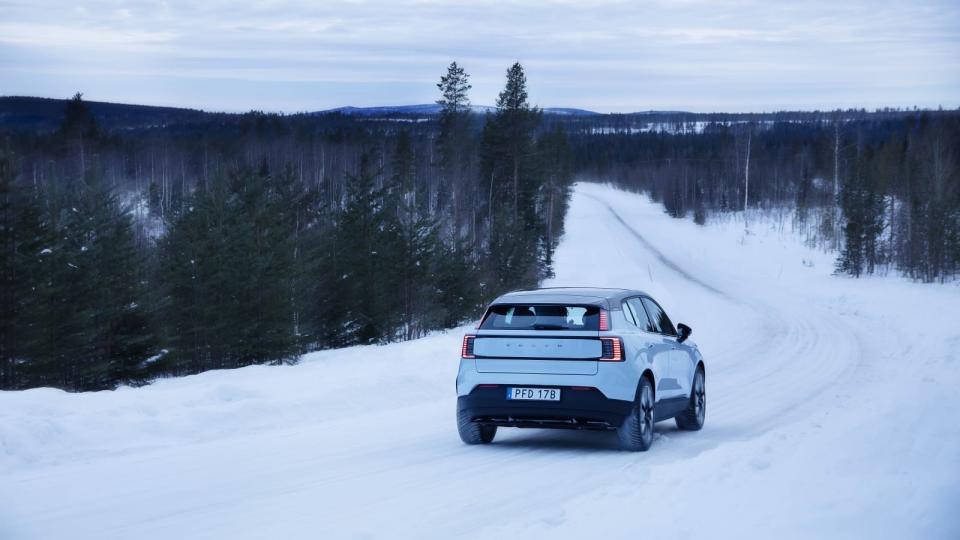
The Björnträsk Ice Track just outside the hamlet of Gullträsk is not easy to get to. First, one must find your way to the Baltic-adjacent town of Luleå, Sweden. It’s one of the most bustling towns in the remote landscape that is northern Scandinavia, and it just so happens to host a small airport, which sees about nine arriving flights per day. Luleå is far enough north that it’s covered in a permanent blanket of snow from November until spring hits, and the snow coverage you see on the coast only increases the further one drives inland.
Unlike most winter-stricken American states, Sweden doesn’t use salt to help clear snow and ice from its roads. Instead, gravel is used in abundance, but frankly, it’s not much help when snow consistently covers it right back up. What you’re left with is hard-packed snow on all the roads, making studded tires – that you hear everywhere while walking around town – compulsory and something you don’t want to argue about. If your average American driver were to be airdropped into this reality, traffic everywhere would be miserably slow and an absolute nightmare. But not the Swedes! Thanks to the biting grip of studs and massive rally lights affixed to nearly every vehicle, neither the snow nor the everlasting darkness of winter – close to 24 hours a day at winter’s peak up here – is slowing these folks down. Good luck keeping up with any of the locals on all of the meandering country roads, because even if you try, you’re probably going to lose. And that loss is likely going to be you and your car in a snowy embankment. (Not that Autoblog has any experience with driving Volvos into Luleå's snowy embankments.)
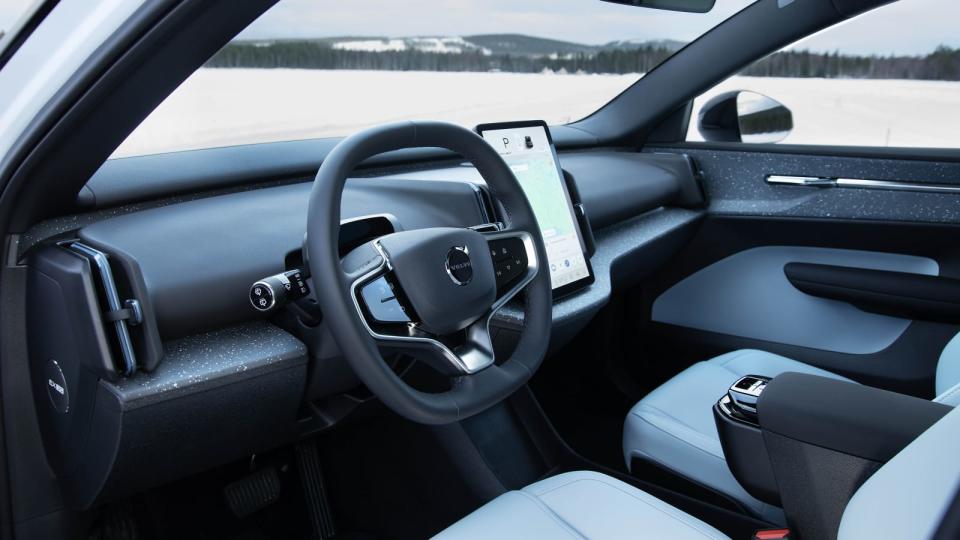
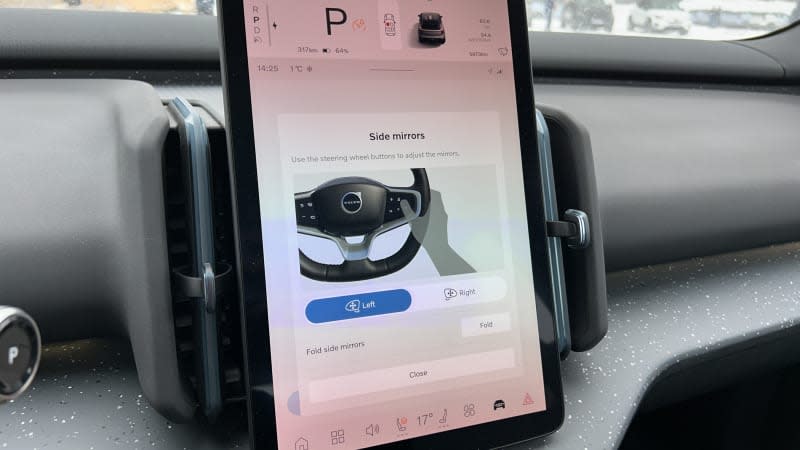
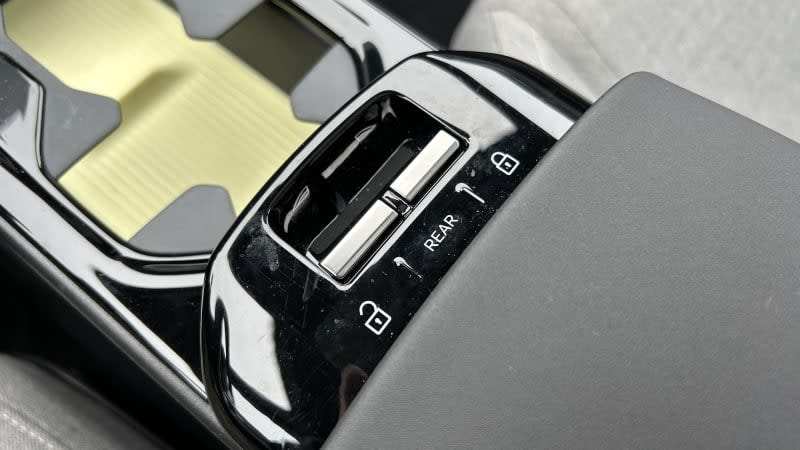
Getting my bearings in the EX30 while also trying to navigate this foreign, winter landscape is a less-than-straightforward task. One of its biggest cost-saving measures is the elimination of buttons and switches in the cabin. Volvo hasn’t gone full-Tesla yet, but the EX30 is nearly there with no instrument cluster or head-up display to speak of. The mirrors are adjusted via steering wheel buttons and the quick-to-react, portrait-oriented 12.3-inch touchscreen. Its headlight controls are also found within said screen, as are climate, heated seat and heated steering wheel controls. Even the power seat adjustment has been simplified by just using one giant toggle on the seat for all movements instead of separate pieces for the back and bottom. And last but not least, take a gander at the window switches, of which there are only two positioned in the center armrest. You press a nearby “Rear” button should you want those same switches to control the rear windows instead of the fronts, eliminating another two switches from the interior.
Tesla’s success tells us this reduction in functionality and centralization of controls – at least when paired with excellent powertrain performance as the EX30 is – into a single screen still sells, but it’s not going to be for everybody. Mindless tasks in current Volvos such as opening the glovebox or dropping the rear windows now require you to delve into a screen or press a touch-haptic button. These sorts of design decisions are what allow Volvo to price the EX30 as it does, and there’s no doubt that it’s a worse experience for the end user. That said, at least the interior styling doesn’t follow Tesla into the world of dreary minimalism. Its colorful and cheerful trim options – or “Rooms,” as Volvo refers to them – give it loads of traditional Swedish personality, and the recycled plastic materials usage is a pleasant, green touch without coming off as cheap or offensive.
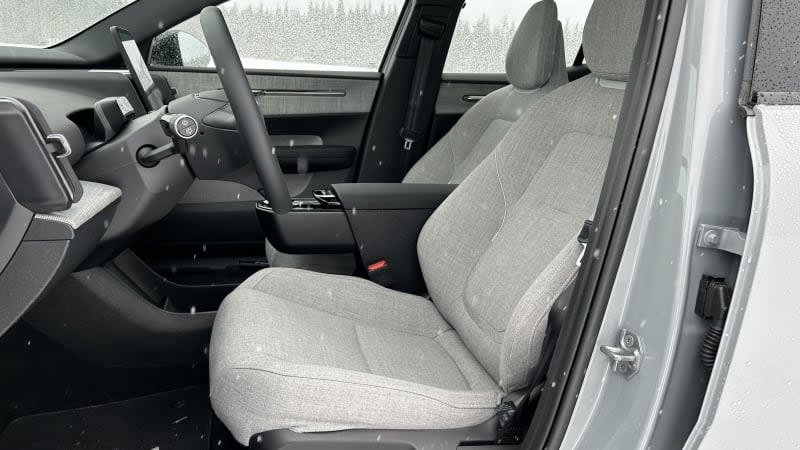
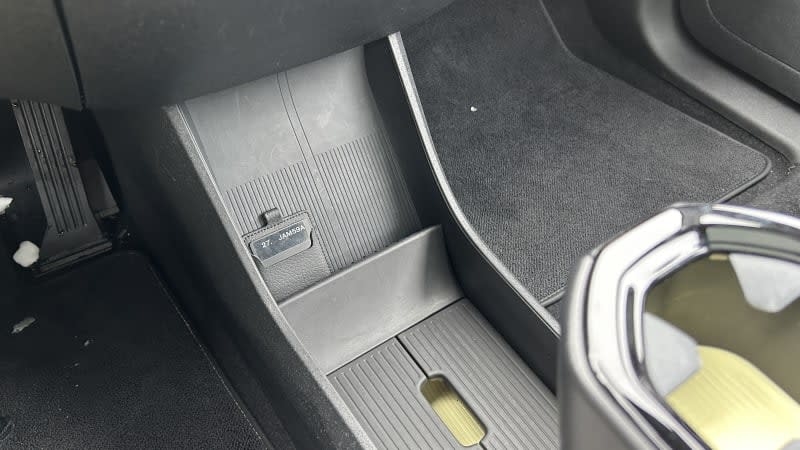
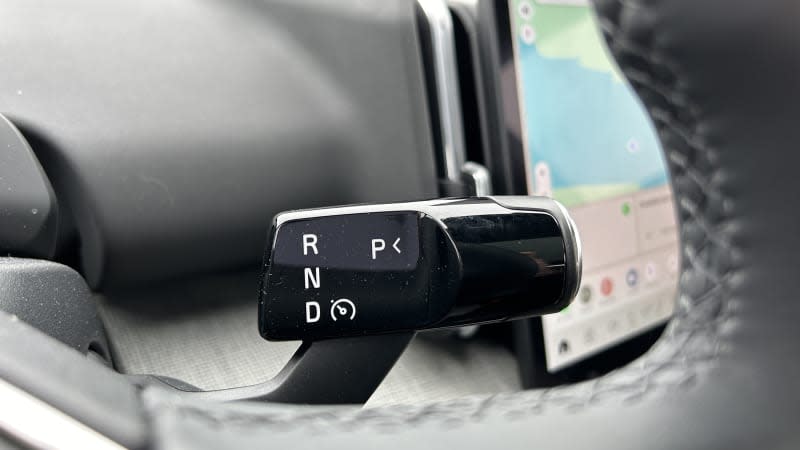
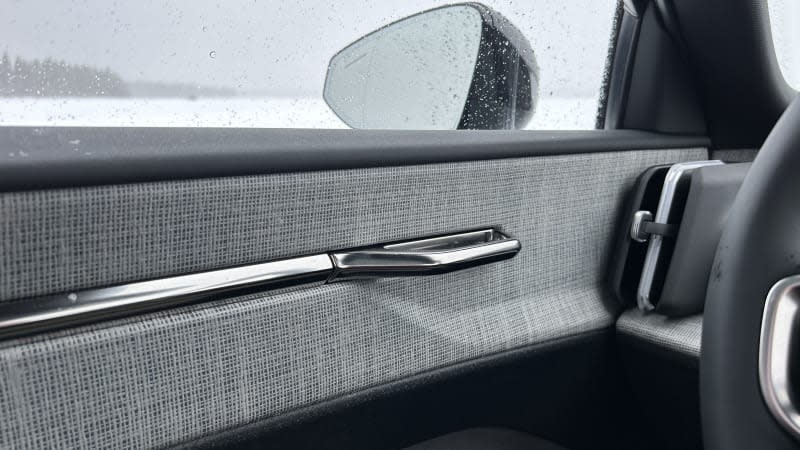
I flick the new column shifter that also doubles as a cruise control activation switch – no Orrefors crystal here – down into “Drive,” and off I go in the quick-but-not-alarmingly-so RWD version. Despite the studded tires, the EX30 is quiet and refined enough inside to earn the Volvo badge. The snowy, forested roads twist and meander, presenting occasional dips that challenge this little car’s suspension. Its long wheelbase is a real help to make such a short car ride like a larger one, though the big wheels Volvo fits (19s and 20s on these test cars) still result in firm impacts over the rougher country roads.
The snow’s been coming down in blankets throughout the whole drive – the weather report said at least 4 inches would fall through the afternoon – but I finally arrive at the frozen lake with just over 60% charge remaining after starting the morning at 95%. Official EPA figures aren’t out yet, but Volvo estimates its single-motor EX30 will go about 275 miles with a full charge on its 69-kilowatt-hour battery pack. That number is compromised in Sweden’s mid-20-degree weather, though, as 64 miles of driving consumed about 30% of the available energy, equaling out to a total range in the 210-220-mile ballpark in these winter conditions. Given the EX30’s price, I’m going to call that a win. Sadly, I didn’t get a chance to charge the EX30 in these cold temperatures, but Volvo says it can DC fast charge at speeds up to 153 kW, resulting in a charge from 10% to 80% taking 27 minutes.

 Yahoo Autos
Yahoo Autos 
